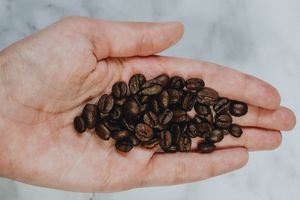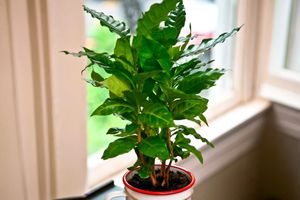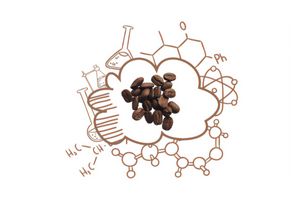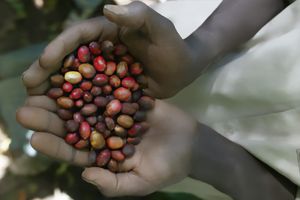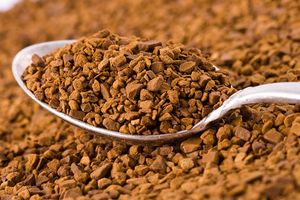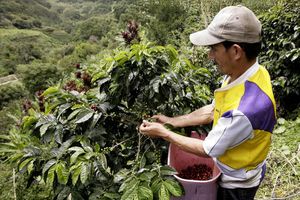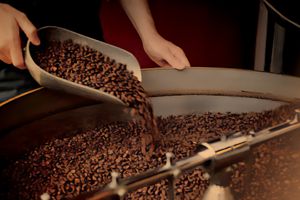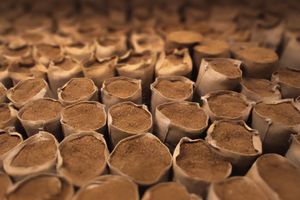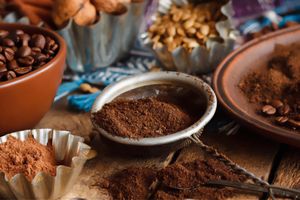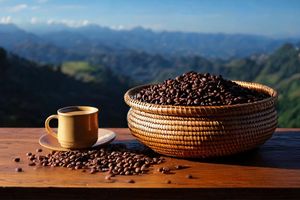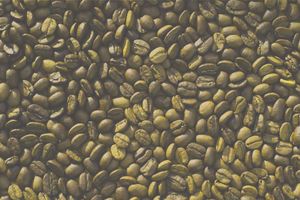From Bean to Cup
What Happens to Coffee Before It Reaches Our Homes
It may come as a surprise to many that coffee does not grow in Italy. Why does such a stereotype exist? While Italy has indeed given us espresso and shaped coffee culture, coffee, unfortunately (or fortunately), does not grow there.
So, where does coffee grow? There's what's known as the "Coffee Belt" of the Earth. This region stretches around the equator, plus or minus 10 degrees to the north and south. It is here, in countries with tropical and subtropical climates, that the ideal conditions for growing coffee exist. Coffee trees thrive in warm, moist conditions and tropical soil.
To trace the entire journey from bean to cup, let's take a look at a coffee you can try from us, for example, Ethiopia Yirgacheffe.
Ethiopia is perfectly suited for coffee cultivation due to its climate and terrain. It is the true cradle of Arabica, where it was first discovered and used to make the beverage from these beans.
1. Farm
Yirgacheffe is one of the most renowned coffee-growing regions in Ethiopia. Coffee trees grow at altitudes ranging from 1800 to 2200 meters. Initially, the beans are planted in containers where they germinate. About six months later, during the rainy season, they are transplanted into the soil. Only in the second or third year does the tree bloom and produce its first fruits – the coffee cherries.
2. Harvesting
There are several methods for harvesting coffee:
- stripping (collecting all cherries, ripe and unripe alike);
- picking (handpicking only the ripest cherries);
- mechanical harvesting (using machines to collect the crop).
Our cherries are harvested using the picking method – manually and meticulously selecting only the ripest fruits. Sometimes, farmers lack the funds to hire workers, so they harvest with their families.
3. Processing
After harvesting, the next stage is processing. There are washed and natural (dry) processing methods. Washed processing is considered higher quality, as it allows for the removal of more defective cherries. Our coffee is sent to a processing station where the pulp is removed and the beans are washed with water. After washing, the beans are dried on African beds – special stretched fabrics – for 10-20 days.
4. Sorting
After drying, the top layer – the parchment – is removed from the beans, defects are manually selected out, and the beans are sorted by size. In Ethiopia, Arabica is wild, and many varieties may grow on one farm, so the beans are sorted by size and graded. Our Yirgacheffe coffee is grade 2. After sorting, the beans are packed in special bags and prepared for transportation.
5. Transportation and Storage
The beans are transported in containers with a ventilation system and a moisture collector. After delivery, they are placed in specialized warehouses for further storage.
6. Cupping and Roasting
Our company orders a sample of green coffee from the supplier. After cupping (tasting), we decide whether to include this coffee in our assortment. If it meets our standards, the beans are roasted, sorted, and prepared for packaging.
7. The Cup
The final stage is your creative process. The coffee reaches your home or coffee shop, and now it's your task to fine-tune the recipe and brew the perfect cup. By the way, 18 grams of coffee contains about 60 cherries or 120 beans.
Every time you enjoy a cup of coffee, remember the long and complex journey this bean has taken to reach your hands.

















